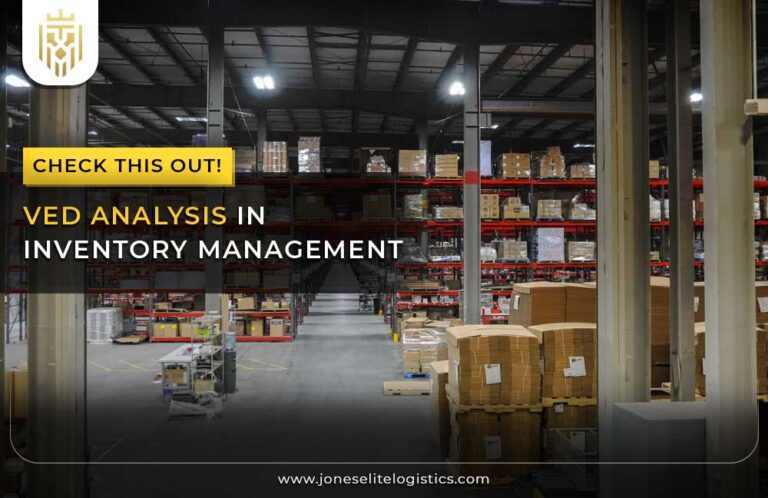What is Supply Chain Risk Management?
Supply Chain Risk Management (SCRM) involves systematically identifying, assessing, and implementing mitigation strategies to manage potential disruptions, like natural disasters and cyber threats, that can impact operations. Effective SCRM is essential for maintaining business continuity in today’s interconnected global supply chains, ensuring that companies are resilient against supply chain risks across international networks.
Types of Risk in Supply Chain Management:
Supply chain risks vary and include economic, environmental, political, and ethical risks. Effective supply chain risk management strategies are essential to mitigate disruptions and maintain stability within complex, interconnected global supply chains.

Economic:
Economic risk stems from macroeconomic shifts, such as inflation, currency fluctuations, and changes in interest rates. These factors can severely impact both local and global supply chain risk management by influencing costs and availability of goods. Implementing robust supply chain risk management practices ensures adaptability in changing economic landscapes.
Environmental:
Environmental risks, including natural disasters and climate-related events, affect supply chains worldwide, with high potential to disrupt supply routes. Businesses that develop strong mitigation strategies and backup plans for these risks can enhance their business continuity by maintaining operational stability during environmental disruptions.
Political:
Political risks, including government regulations, sanctions, and changes in trade policies, may impact the supply chain management and lead to unexpected costs or delays. By closely monitoring political climates and preparing accordingly, companies can reduce the impact of these challenges on their supply chain risk profile.
Ethical:
Supply chain risks arise from unethical practices within supplier networks, which can damage a company’s reputation and affect demand. Ensuring strict adherence to ethical guidelines across the supply chain helps mitigate this risk, fostering trust with customers and upholding the company’s image.
External Supply Chain Risks:
External supply chain risks include demand fluctuations, environmental impacts, economic volatility, cybersecurity threats, labor shortages, and logistical disruptions. These supply chain risks demand continuous analysis to enable businesses to create flexible and resilient supply chains, helping them navigate complex global environments.
Internal Supply Chain Risks:
Internal risks include production failures, technical issues, and equipment breakdowns, which can disrupt supply chain operations if not managed. Regular maintenance and careful resource planning are essential to mitigate these risks and sustain operational continuity across the supply chain.

Supply Chain Risk and Challenges:
Supply chain challenges include weather-related disruptions, shipping container upheavals, technology dependencies, and cybersecurity threats. Proactive supply chain risk management ensures business continuity, building resilience against both internal and external risks.
Weather:
Extreme weather events, such as hurricanes and floods, impact raw material availability and logistics, driving up costs and risking contract fulfillment. Proactive mitigation strategies in supply chain risk management help businesses navigate the challenges posed by natural disasters.
Shipping Container Upheavals:
Pandemics, political conflicts, and port congestion can severely impact the availability of shipping containers, disrupting delivery schedules. Enhancing visibility and preparing alternative shipping routes can reduce the impact of these supply chain risks.
Technology Dependencies:
Heavy reliance on SaaS providers and technology exposes supply chains to downtime risks during outages or cyber threats. Investing in a robust IT infrastructure and backup solutions reduces these risks, supporting business continuity.
Cybersecurity Threats:
Cyber threats, like ransomware and supplier data breaches, pose significant supply chain risks and may halt operations. Global supply chain risk management strategies, such as encryption, vulnerability scanning, and employee cybersecurity training, help mitigate this growing threat.
Risk that affects Supply Chain Operation:
Risks impacting operations include supplier reliability, demand fluctuations, global events, and ethical considerations. Strategic supply chain risk management and mitigation strategies are crucial for reducing vulnerabilities and supporting a reliable global supply chain.
Supplier Risk:
Supplier risks, including operational delays and cybersecurity threats, challenge supply chain reliability and require active supply chain risk management. Assessing supplier performance and risk exposure helps manage dependencies and strengthen business continuity.
Demand Fluctuations:
Market changes can cause demand volatility, affecting stock levels and costs. By enhancing demand forecasting and implementing flexible inventory strategies, companies can manage these supply chain risks effectively.
Global Events:
Geopolitical events, climate disruptions, and labour shortages affect global supply chains, impacting operational consistency and customer satisfaction. Resilience planning is essential to ensure smooth operations amidst these global risks.
Ethical and Social Responsibilities:
Unethical practices, such as environmental damage or human rights violations, can disrupt business continuity and tarnish reputation. Implementing regular audits ensures compliance and mitigates this supply chain risk.
How to Reduce Supply Chain Risk?
To reduce supply chain risk, companies must identify vulnerabilities, diversify suppliers, and establish contingency plans. Proactive supply chain risk management safeguards business operations from potential disruptions, ensuring smoother operations and enhanced resilience.

Identity:
Thorough risk assessments prioritize critical risks and vulnerabilities within the global supply chain, enabling early identification and mitigation strategies to protect business continuity.
Access:
Evaluating supplier reliability, financial stability, and compliance is key to creating a robust, risk-resilient supply chain. Continuous assessment enhances supply chain risk management and fosters stronger supplier relationships.
Mitigate:
Implementing strategic sourcing, buffer inventory, and flexible logistics networks are vital mitigation strategies to reduce potential disruptions, safeguarding supply chain operations and reducing dependency risks.
Monitor:
Real-time monitoring of supplier performance and market conditions helps companies respond quickly to evolving supply chain risks and external changes, ensuring proactive management of the supply chain.
FAQs
1)What is supply chain risk management?
Supply Chain Risk Management (SCRM) systematically identifies, assesses, and mitigates supply chain risks—such as natural disasters or cybersecurity threats—to ensure business continuity in increasingly complex supply chains.
2)What are the types of Supply Chain Risk Management?
Supply Chain Risk Management addresses various risk types, including economic, environmental, political, and ethical risks. Each type requires specific mitigation strategies to protect supply chain management from potential disruptions.
3)How to manage supply chain risk management?
To manage supply chain risks, identify vulnerabilities, assess supplier reliability, diversify sources, and create contingency plans. Consistent monitoring and strategic planning ensure resilience against unexpected supply chain disruptions.
4)What are supply chain risk and challenges?
Supply chain risk and challenges encompass external factors like extreme weather, global events, and internal factors such as production failures. Proactive supply chain risk management is crucial to prevent disruptions and maintain operational continuity.








